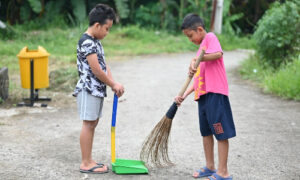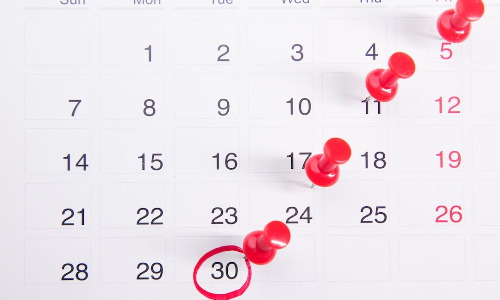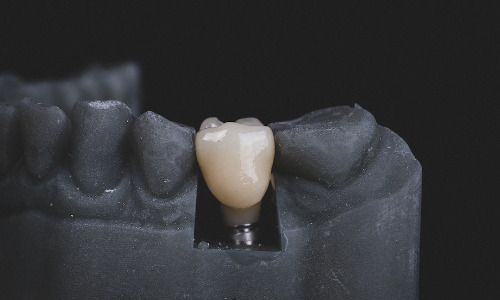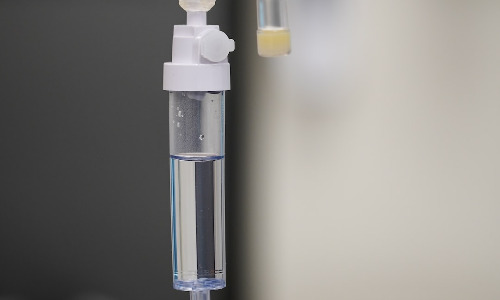(Warning: This blog post is non-technical but purely personal. I write openly about my current health issues. This blog might be triggering for people who struggle with, or lost dear ones to, cancer and other similar diseases.)
This is the twelfth post in a series on my personal road from first signs of leukemia, through diagnosis and treatment, to, hopefully, full recovery. Click here to read all posts in this series.
Doing fine
I have not written any updates in a long time. The reason is simple. There simply was nothing to report. I go out to do my (almost) daily walking or biking to strengthen my muscles and build by stamina. I make sure that I eat sufficient to keep gaining weight – or rather, in fact, I am now in the stage where I eat slightly less because the goal is now to maintain weight!. And I regularly visit the doctors who then draw some blood or do another bone marrow biopsy to check on how things are progressing inside my body, and every time they discuss the results with me, they are happy with what they see.
So all in all, I am doing fine, nothing special is happening, and I feel quite okay (so much so that I sometimes almost forget that I am still a recovering patient!)
Donor lymphocyte infusion
However, early this week (on June 6, to be precise), there was another significant step forward in my recovery process. My first donor lymphocyte infusion (DLI). I hesitated to link to the Wikipedia article, because while it does describe the process just fine, it does so in the context of treatment for a relapsed patient. And I can assure you that I have not had any relapse! (yet???).
For those who skipped the Wikipedia link, the short and heavily simplified explanation is as follows. After my donor had provided their stem cells for me, lab technicians worked their magic on the donated material to separate out (most of) the lymphocytes (cells in our blood that specialize in combating any cells that are foreign to our body). Removing those cells, reduces the risk of reverse rejection (where the donated cells start to combat my own cells).
But the separated lymphocytes are not discarded. They are deep frozen and stored for later use. Once the donor stem cells had settled in my body, and I had recovered enough to start a new risk period, the doctor deemed it safe to schedule my first DLI. Yes, first. As I understand it, there are usually two DLIs, typically three months apart. In some cases, a third DLI may be needed, but this is unusual.
As mentioned, these are not in response to a relapse. Scheduling those two DLIs is part of the standard procedure for stem cell donation, at least in my case. (I do of course not know how much these procedures change from one patient to another).
This does of course result in another period of increased chance of reverse rejection. But that risk is outweighed by the benefits it provides. By supplying me with an extra boost of lymphocytes, my immune system gets a huge boost. So in practice, this means that I need to be a bit extra careful for especially the coming six weeks, and monitor myself for signs of a reverse rejection; but after those six weeks, I can finally loosen some of the very strong life rules I currently have to stick to.
The procedure
The procedure was really very simple. I arrived at the hospital at three o’clock. The nurse inserted an IV, drew some blood, and checked my general health parameters (blood pressure, temperature, heartbeat). Then she called the lab to ask them to start thawing the lymphocytes, and asked me to wait for approximately half an hour, when the lymphocytes would be ready.
Once the lab sent up the lymphocytes, I was first given a medicine to suppress allergic responses. This is because the lymphocytes are “enveloped” in a sort of protective fluid, to protect them from damage while being frozen; and sadly that protective fluid has a risk of causing an allergic response. Then the lymphocytes were attached to the IV, and in perhaps ten to fifteen minutes, they were all pumped inside my arm. (While not frozen anymore, they were still well below room temperature, which resulted in a fun sensation of cold in my arm).
And after that I was dismissed. Back home, chauffeured by my wife, because the anti-allergy medicine has a side effect of making the patient drowsy and hence unfit to drive. All in all, I was in the hospital for maybe two hours. Much better than my previous month-long stays!
Rejection?
And now I’m back home, doing my thing. And hoping that there won’t be any signs of rejection. The things I need to look for myself are rashes and other weird skin reactions, and changes in my bowel movement (especially diarrhea can be a red flag). Other signs are typically visible in the blood long before they are visible on the outside, so the doctors will monitor for those.
So far, there have been no bad signs yet. Fingers crossed it remains that way!
Next steps
So, what’s after this? Well, there is of course the second DLI. This will probably take place early September.
But I will also soon(-ish) start a long period of regular vaccinations. All immunities that I have had all my life, because of childhood vaccinations (e.g. diphteria, smallpox, whooping cough), adult vaccinations (e.g. Covid-19, hepatitis), and simply by attracting diseases and recovering (e.g. many flu variants, measles, mumps) – all those immunities are gone. The doctors took care of that when they lovingly tore down my existing immune system, in preparation for receiving donor stem cells. And so they all need to be restored.
Until now, it was too early to start with those vaccinations. I first had to recover from the transplantation, and gain enough strength. And that infusion of donor lymphocytes that I just received was also very important to prepare my body for the vaccinations. But soon. I will be strong enough to receive the first vaccinations. Not all of them at once, that would be a much too heavy hit on my immune system. The many required vaccinations will be staggered, applied over a period of about a year.
Consequences
All of this translates to some good and a few less good consequences for me, and especially for what I can and cannot safely do.
At this time, it is finally safe for me to go to places where there are more people (such as shops), as long as I try to keep distance and wear a mask. Really crowded places are at this time not yet safe.
By the end of July, I can finally add swimming (both in public pools and in open water) to the list of activities that I do to build muscles and stamina. I’m very happy with that! As I am writing this, we have a very warm weekend in the Netherlands, and it’s really too hot to go walking or biking. Too bad I cannot go swimming now, yet!
Once I have had my first Covid-19 vaccination, it will be reasonably safe for me to go to more crowded places. That makes me very happy, because that means that I will likely be able to attend two great conferences that are scheduled in October in the Netherlands, DataSaturday and Techorama.
However, it is very unlikely that the doctors will allow me to travel abroad for the near future. A short trip just across the border, e.g. to the most western part of Germany, would not be too big of a problem. But anything that involves much longer drives, or a flight, would be too much of a risk. They simply want to make sure I can make it to the hospital within a few hours at most in case something unexpected happens.
And that means that, while it’s not 100% sure yet, I now have to accept that I will likely not get permission to travel to Scotland in September. Which means that I will likely have to cancel my participation at DATA:Scotland – again! I am not cancelling my bookings just yet, there is still a (very) small chance that I will get permission. But I am not holding my breath for it.
For me, the ultimate goal remains recovery for the long term. No matter how much I would like to go to Edinburgh, if the doctor says it’s not safe, I won’t go. I will not risk my long term recovery for a short term benefit.
At this time, it really seems that long term recovery is in my future. There are no guarantees, things can always change, but I see plenty of reason to be positive!






2 Comments. Leave new
Wonderful news, Hugo! So glad to hear the news about your continuing recovery and that you should be able to return to community activities later this year! Stay well my friend. =^D
I decided to wear my Team Hugo shirt today and that made me look at your blog. You always detail the procedures so well so we can all understand what you are going thru. It does sound like your journey is continuing as hoped for. Please keep passing on your health news.
Chris